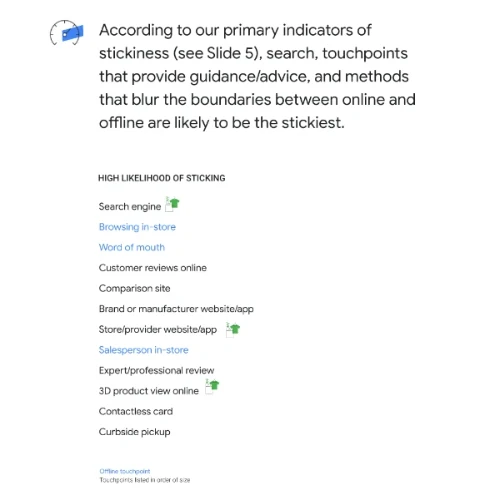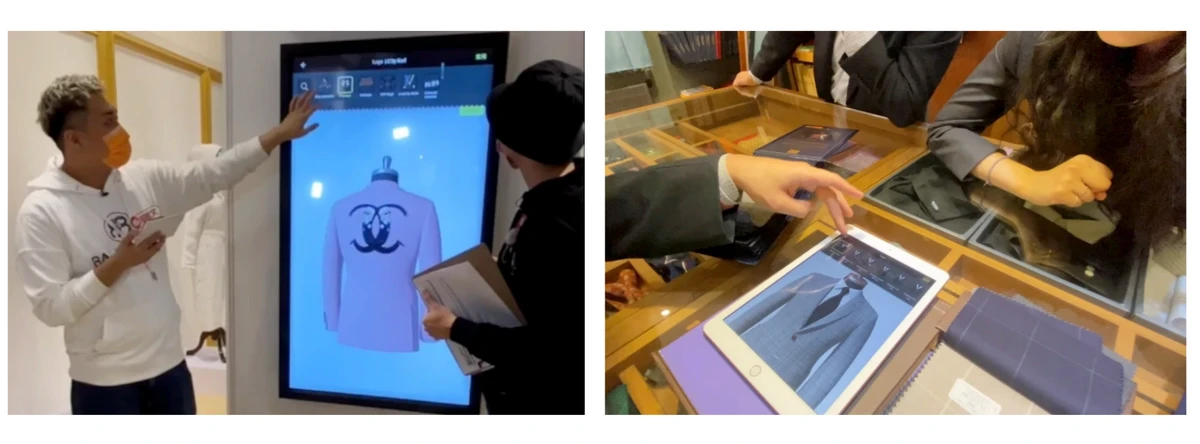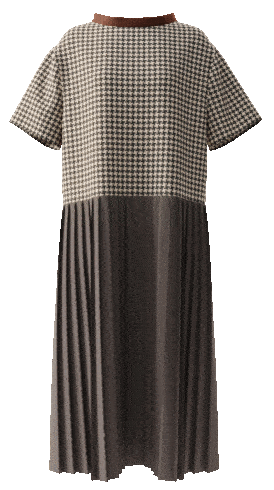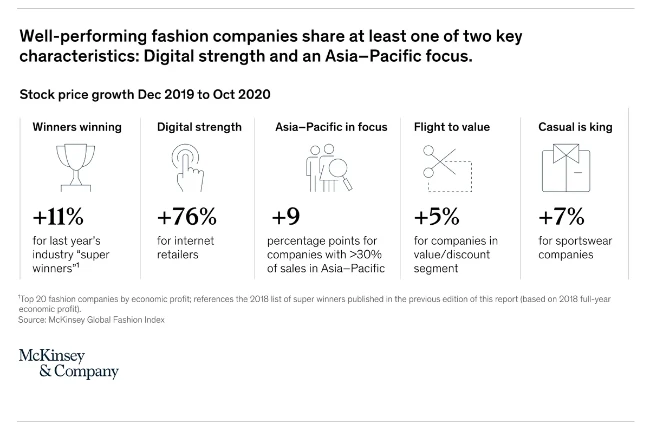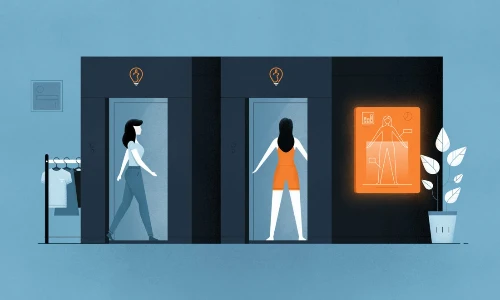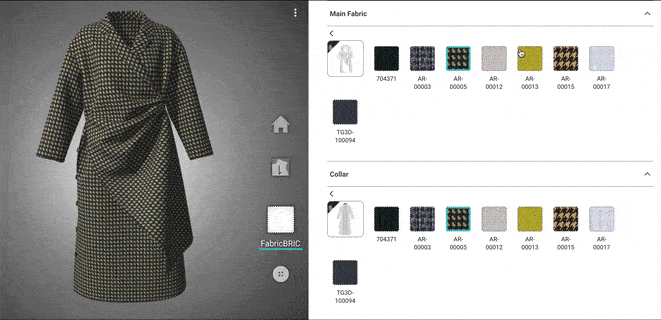We’ve talked a lot about the dramatic and unexpected behavior changes caused by the COVID-19 situation during the past year. Now with the restriction lifting all over the world, how should the fashion brands react? What's the future of fashion after Covid? For brands with brick and mortar fashion retailers, you can stand out among the competitors through 3D fashion technology. However, are brick and mortar retail stores the only thing that fashion retailers should focus on in the post-pandemic future? According to Google’s recent research on consumers’ current behaviors and possible future shopping habits, the pandemic has reinforced what brands and retailers should continue to focus on: enabling people to shop when they want, how they want, and where they want, all the while providing a pleasant and frictionless experience.
Image Source: Think with Google
Here are three recommendations that we believe fashion brands should continue investing in the post-pandemic future:
The Coherent Omni-channel and “Phygital” Shopping Experience
Consistency is key here. Fashion brands learned so much from being plunged into the online-only virtual fashion world, and now it’s time to blend the two. Delivering a consistent customer experience for both online and offline shopping is the aim. Bring the digital fashion experience into an offline retail environment and bring the offline humanized experience into your fashion e-commerce.
Implement innovative digital fashion technology in your brick and mortar retail stores by installing a 3D clothing display alongside physical clothing. Set up the 3D customization experience on an iPad or large display monitor. Add a 3D body scanning experience within the fitting room.
Additionally, you need to create a physical shopping experience in your fashion e-commerce.
An interactive 3D display allows a 360° view of your clothing. An AI chatbot replicates the salesperson recommending size or styles for the users. Live video chat allows for personalized interaction. A virtual try-on service duplicates the changing room experience, using a 3D avatar created through a body scan done in your shop or a mobile 3D body scan app alongside 3D clothing.
Customers interacting with the 3D configurator display in a brick-and-mortar retail store
A Consumer-Centric Mentality
Unlike the traditional fashion industry, understanding your consumers’ demands and offering the things that they genuinely want is important within the future of fashion. This can be done by consistently talking to your consumers through questionnaires, live chat, or interviews.
The card payment company Square has done this spectacularly. Aimed at small businesses, it at first tried to talk to them in purely financial terms. However, it quickly realized that they were floundering during the pandemic, and craving connection with other small businesses, to see how they coped. Square gathered customer experiences by inviting them to ring a freephone number and later turned these conversations into the popular Square Stories series. They also added various tools to their offering to make life easier for merchants.
Also, stay aware of social changes and trends. According to McKinsey, nearly a third of Americans drastically upgraded their homes during the pandemic, including adding home gyms and workspaces and in general, making it a nice place to spend time. While an equal amount are excited to get back to pre-pandemic out-of-the-house activities, don’t neglect those homebodies who discovered that Zooming work in their pajamas is their happy place. For brands, this is likely to mean that many consumers won’t be abandoning their comfy athleisure any time soon.
Up your game by offering personalization/ customization with the help of digital fashion technology. “Personalization” used to mean embroidering someone’s initials onto a shirt. Now, it’s far more detailed. Customers have a strong grasp of what suits them and don’t, and with 3D fashion technology, they can easily visualize how your design will look with small tweaks virtually. Changing necklines, hemlines, or fabric colours is not only a fun game for customers but offers real retention and customer satisfaction.
3D visualization for different customized fabric options
To thoroughly understand and satisfy your consumers, you should also utilize different digital tools to gather data. This leads to our next point.
Digital Strength in Data & Analytics
It’s time to redefine the role of innovative technologies in your company’s overall strategy. According to McKinsey’s The State of Fashion 2021 report, companies that have performed the best over recent months tended to share at least one of two key characteristics: Digital Strength & Asia-Pacific focus. This also refers back to our last point in providing a personalized experience to your customers. Optimizing data analytics to improve personalized product offering for target customers will eventually bring higher sell-through and profitability. (Keunyoung O, 2020)
Image Source: McKinsey & Company
You may have heard of the term Big Data. If its actual meaning and application is a little vague to you, it’s time to start looking into it a bit more. Big Data is just as the name suggests: a massive amount of digital data, which, thanks to AI, can now be sifted through very quickly to discover trends and biases. Because, in part, of the move to digital fashion and online shopping, fashion brands can collect more information about customers than ever before, with full permission, of course. Everything from age, gender, size, and location to their preferences on price points and fabrics helps build up an individual profile. All of this discrete customer data builds up to show an overall picture. On the shop floor side, it can be seen which items perform best. Together, the info can be used to predict which trends will be hot next week or next month, never mind next season. It can also be used in other contexts: both hip makeup company Glossier and eyewear specialists Warby Parker started life online. When it came to setting up a brick and mortar store, they had plenty of data analytics to point them to locations where they would thrive.
3D body scanning is also an excellent source of highly detailed data. It is obvious that the working assumptions about body shape and size are inaccurate. Ill-fitting clothing is a major cause of customer returns in the traditional fashion industry. Scanning multiple shoppers to get accurate measurement information using a simple and entirely impersonal, hands-off method is a real step forward for the industry.
Body data from 3D body scanner
If you don’t have a budget to install a body scanner in your store and take advantage of the information offered by 3D scanners, Alvanon is one company who offers anonymised aggregated data collected from body scanning. They have scanned people in many different countries and across age ranges to form an accurate sizing picture of any brand’s target customer in different demographics and territories.
Image Source: Alvanon
Another digital fashion innovation is in using a 3D fabric scanner to acquire fabric color and texture data to understand and predict the target audience's demands. A vast digital fabric library can be built up by scanning the physical fabric options for the season. Offering these choices to potential customers as they view your designs online gives you a chance to see what is most appealing to your demographic at that moment. Again, you can have your own personal library or take advantage of the data collected from other companies.
Fabric visualization on 3D clothings
Using these three strategies will help your brand to navigate the post-pandemic landscape while keeping its finger on the pulse. Of course, if you need any help, we can help you with customizable 3D solutions and 3D Design Consulting Services to guide you step-by-step through your digital transformation. Please don't hesitate to contact us through the following button.

